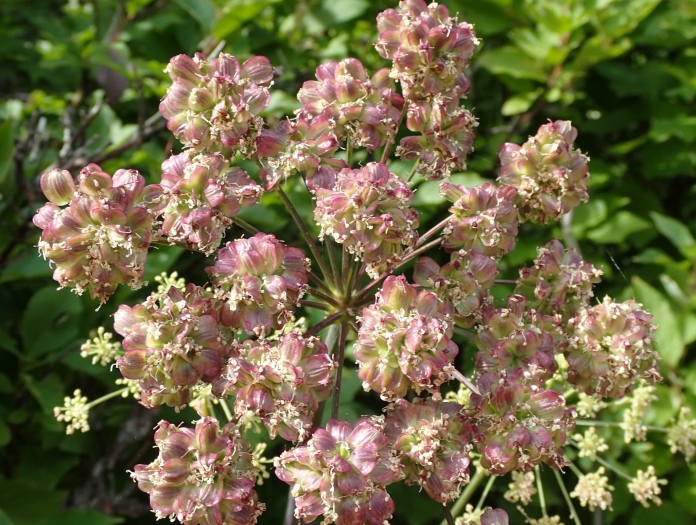Lyall’s Angelica
(Angelica arguta)
Lyall’s Angelica (Angelica arguta)
/
/

mfeaver
CC BY 4.0
Image By:
mfeaver
Recorded By:
Copyright:
CC BY 4.0
Copyright Notice:
Photo by: mfeaver | License Type: CC BY 4.0 | License URL: http://creativecommons.org/licenses/by/4.0/ | Rights Holder: mfeaver | Publisher: iNaturalist | Date Created: 2019-08-14T11:32:54-07:00 |

























Estimated Native Range
Summary
Angelica arguta, commonly known as Lyall’s angelica, is a taprooted perennial herb that thrives in moist, open woodlands and subalpine meadows, as well as along streams and rivers in western North America, from British Columbia to Utah. It typically grows to heights of 3-7 feet, with large, triangular leaves composed of toothed, pointed leaflets, and a stout, hollow stem. During the summer months, it produces showy compound umbels of yellowish or greenish-white flowers that attract a variety of pollinators.
Lyall’s angelica is valued for its striking architectural form and its umbels of tiny flowers that provide visual interest in naturalistic plantings and wildflower gardens. It is also used in traditional medicine, with roots that are believed to have therapeutic properties for treating colds, sore throats, and cramps. In cultivation, Angelica arguta prefers consistently moist soil with good drainage and can tolerate both full sun and partial shade. While generally low-maintenance, it is important to note that the plant may require staking in windy areas due to its height. It is not commonly affected by diseases or pests, but gardeners should be aware that it can be toxic to livestock.CC BY-SA 4.0
Lyall’s angelica is valued for its striking architectural form and its umbels of tiny flowers that provide visual interest in naturalistic plantings and wildflower gardens. It is also used in traditional medicine, with roots that are believed to have therapeutic properties for treating colds, sore throats, and cramps. In cultivation, Angelica arguta prefers consistently moist soil with good drainage and can tolerate both full sun and partial shade. While generally low-maintenance, it is important to note that the plant may require staking in windy areas due to its height. It is not commonly affected by diseases or pests, but gardeners should be aware that it can be toxic to livestock.CC BY-SA 4.0
Plant Description
- Plant Type: Herb
- Height: 2-5 feet
- Width: 1.5-2.5 feet
- Growth Rate: Rapid
- Flower Color: White
- Flowering Season: Spring
- Leaf Retention: Deciduous
Growth Requirements
- Sun: Full Sun, Part Shade
- Water: High
- Drainage: Medium, Slow
Common Uses
Bee Garden, Erosion Control
Natural Habitat
Moist open woodlands, subalpine meadows, and riparian zones in western North America
Other Names
Common Names: Sharp-tooth Angelica, Seacoast Angelica, Poison Angelica
Scientific Names: , Angelica arguta, Angelica lyallii,
GBIF Accepted Name: